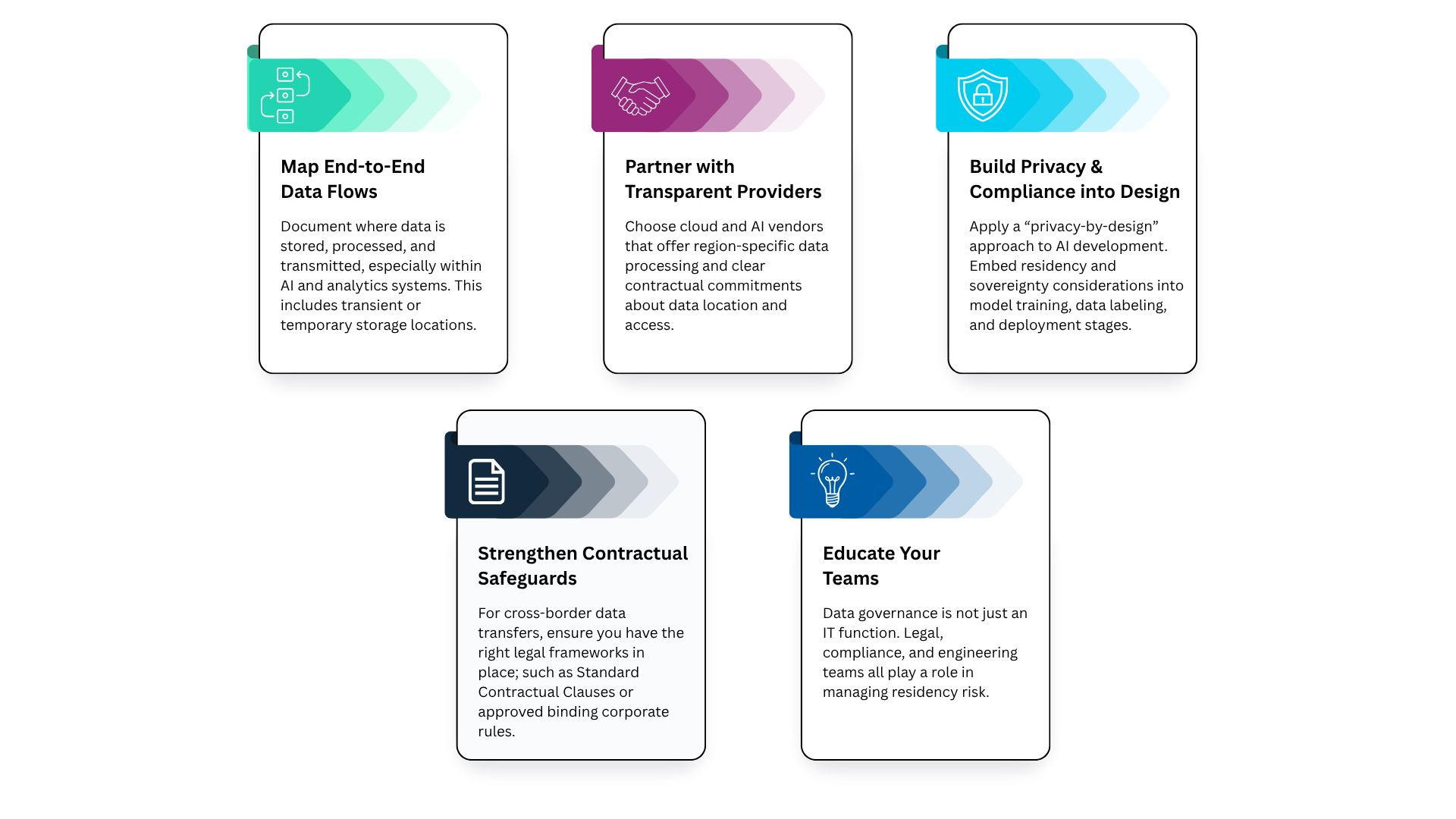As artificial intelligence transforms the way organizations operate, one question has become increasingly urgent: Where does your data actually go?
In the age of cloud computing and generative AI, data doesn’t stay neatly contained within a single data center or jurisdiction. It travels, often invisibly, across regions, service providers, and AI pipelines. This creates a complex web of technical dependencies and legal obligations that most businesses are only beginning to understand.
What Data Residency Really Means Today
Traditionally, data residency refers to the physical location where data is stored. That definition worked well when organizations managed their own on-premises servers or hosted data within a single country.
But in the AI-driven cloud era, data residency is far more dynamic. An AI system might store data in one region, process it in another, and cache or replicate it temporarily elsewhere for performance reasons. Even more challenging, machine learning models may use derived information, such as embeddings or metadata, that still carry sensitive insights about the original data.
This makes it difficult to answer even basic questions like “Where exactly is our data right now?” or “Has it been used to train or optimize an AI model?”
Why It Matters
The implications go well beyond technical architecture. Data residency now intersects directly with privacy laws, compliance frameworks, and customer trust.
For example, the European Union’s GDPR and Canada’s PIPEDA each impose specific rules on how and where data can be processed. Non-compliance can lead to regulatory penalties, but the larger risk is the erosion of trust. Clients and citizens increasingly expect transparency about how organizations handle their personal and business data.
Managing the Risk
The organizations navigating this landscape most effectively are those treating data residency not as a compliance checkbox, but as a strategic pillar of AI governance.
Here are several practical steps leading organizations are taking:

The Road Ahead
As AI continues to evolve, too will the challenges of understanding and controlling data flows. The line between “storage” and “processing” is blurring, and the legal definitions around data ownership are being rewritten in real time.
But one thing remains constant: trust is the foundation of digital transformation. Organizations that demonstrate clear, responsible stewardship of data will have a distinct competitive advantage.
In the AI era, knowing where your data goes is just as important as knowing what it does.
Speak with our experts to build a data strategy rooted in transparency, governance, and trust.
Prepared By:
Rahim Pirani, Senior Security Advisor
Further Reading
Data governance is only one part of a resilient digital strategy. Read how proactive security and AI readiness work together to build trust, here.
